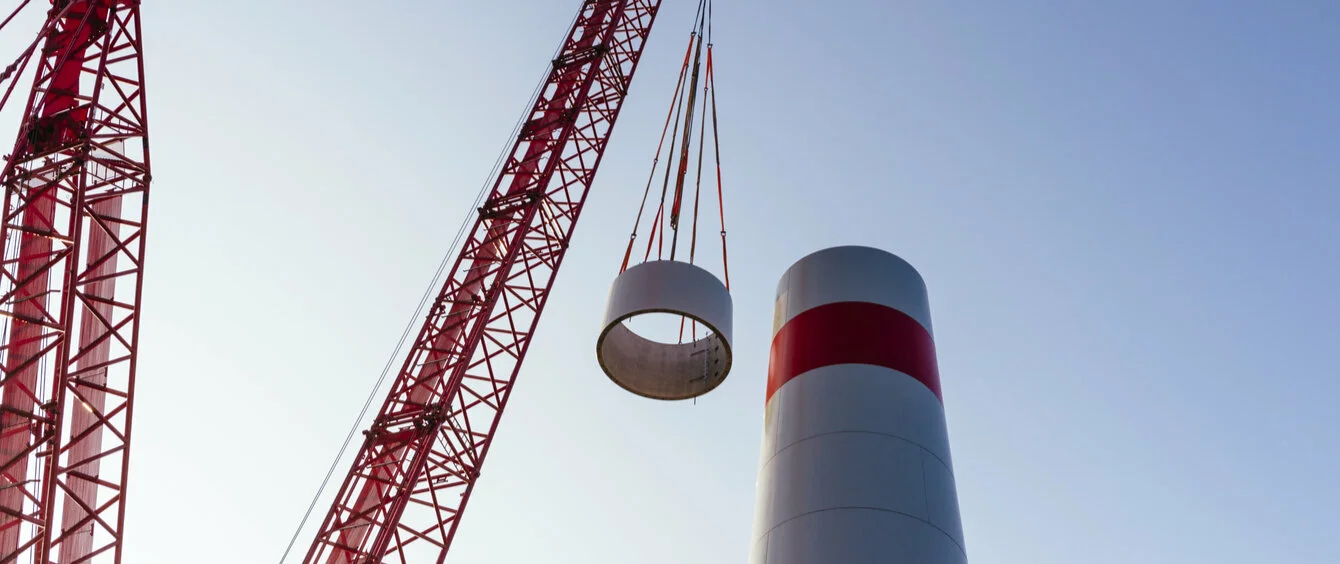The European wind industry is on a stable growth course. According to the most recent market report published by industry association WindEurope in early April and covered by FAZ, 19.1 billion euros was invested in the construction of new wind farms in 2019, financing new generation capacity totalling 11.7 gigawatts (GW). Although this investment figure is smaller than that of previous years (e.g. about a quarter short of the 2018 level) the newly constructed capacity was only nominally less than the average of previous years. In other words, wind power expansion is holding steady, despite falling investment sums. To some extent, this is due to the fact that the technology is becoming increasingly cheaper.
New capacity financed (in GW)
Source: WindEuropeStrong onshore expansion, few offshore projects
According to the report, more than two-thirds of investments (13.1 billion euros) went to the onshore sector. This money was used to fund the construction of new land-based wind turbines with a total capacity of 10.3 GW, the second-highest figure to date. The only time this figure has ever been exceeded was in 2018, when 11.7 GW of generation capacity was built.
“Governments and investors are still keen to jump on the onshore bandwagon. After all, it is the most cost-effective form of power generation for most European countries,” says Giles Dickson, CEO of WindEurope, in relation to the publication of the report. “We expect onshore wind power to account for 80 percent of the wind capacity being added over the next five years.”
Onshore new assets financed (bn. €)
Source: WindEuropeThe decline in invested capital is mainly due to the offshore sector. At 6 billion euros, investments in 2019 were as low as they were eight years ago. Larger sums went to projects in just four countries: France, the UK, Sweden and Norway. However, WindEurope does not consider this to be a long-term trend. According to FAZ, the offshore sector is largely defined by a small number of relatively large projects. As a result, the annual investment volume tends to fluctuate based on the cycles of these projects.
Offshore new assets financed (bn. €)
Source: WindEuropeSpain as front-runner with Germany trailing behind
The front-runner when it comes to the expansion of European wind power, whether in terms of the amount of capital invested or the scope of newly financed capacity, is Spain. In 2019, the Mediterranean country put 2.8 billion euros towards new capacity on the Iberian Peninsula, thereby financing 15 percent of newly installed capacity in Europe. When it comes to capital invested, Spain is shadowed by the Brits (mainly offshore), the French (mainly offshore) and the Scandinavians in Sweden with the Dutch just missing out on a podium finish.
Germany, however, remains something of a black sheep in the midst of it all. The country only dedicated 300 million euros to new wind power projects last year. By way of comparison, between 2.5 and 3 billion euros was invested during the boom of 2013 to 2017. This leaves Germany in 14th spot in Europe’s proverbial wind league table. “Germany’s Achilles’ heel is its approval procedures. The rules are far too complex – for no apparent reason. The government needs to clarify these issues in order to bring investors back onside,” says Giles Dickson from Wind Europe. According to the industry association, 2019 could have even managed to break previous European records if only expansion had not collapsed in Europe’s largest economy.
PPAs break renewables record
According to the market report, power purchase agreements (PPAs), i.e. long-term electricity supply contracts, are becoming increasingly important. Countries with high wind power output such as Sweden, Norway and the UK, in particular, have been able to benefit from PPAs. According to the report, last year more renewable power purchase agreements were signed than ever before, with companies concluding PPAs to secure 2.5 GW of renewable capacity. Wind power came up trumps, accounting for 1.7 GW of this total.
In any case, when it comes to the future of the wind market, particularly in view of the current corona crisis, the message from industry representatives to European governments and investors is clear. As Giles Dickson puts it, “Renewable energy and the European Green Deal are the driving force behind Europe’s upswing. It’s creating growth. It’s creating jobs. And it is the key to solidifying our technological leadership with a view to creating a carbon-neutral economy.”
Photo credit: shutterstock.com, Joerg Steber
